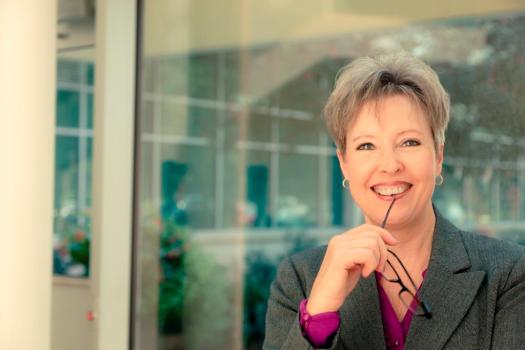
Experts warn that local government is among the sectors most ‘exposed’ to an ageing workforce, underscoring the importance of good workforce planning.
The local government workforce is older than Australia’s national labour force and a “large retirement wave” will increasingly affect the sector over the next decade says Alex Lawrie, a researcher at the Institute for Public Policy and Governance at the University of Technology, Sydney.
Mr Lawrie and his colleagues have been tracking the ageing of the local government workforce since they authored the first profile of the sector’s workforce in 2014. That research, based on 2011 census data, found that 37 per cent of local government workers were aged over 50.

But the latest figures, gleaned from the 2016 census, show the share of local government workers due to retire in the next 10 to 15 years has increased further – up to 40 per cent.
“Local government is definitely one of the most exposed industries and it’s at the forefront of this retirement wave we know is going to hit the national workforce over the next 10 to 15 years,” Mr Lawrie tells Government News.
Local government is more affected than industries such as construction, mining and financial services, where 25 per cent of workers are aged over 50, but fares better than sectors like agriculture, forestry and fishing, where 47 per cent will start retiring in the next decade or so.
The data also shows that the ageing of the local government workforce is concentrated in key groups, with asset and infrastructure management (both at the managerial and field level) among the most affected. The 2014 workforce profile also identified an “ageing cohort” of CEOs and general managers.
The extent of local government’s ageing workforce varies across the states – with Victoria (43.5 per cent), Tasmania (42 per cent) and NSW (40.7 per cent) having the highest proportions of workers aged over 50.
Regional councils are also often more affected than their metropolitan counterparts, Mr Lawrie says.
“Metro councils effectively have a larger labour market to draw employees from, and those markets tend to be younger. As people get older they often seek a tree or sea change, which means you have much older labour markets in those regional areas.”

Sophia Symeou, CEO of management and workforce consultancy INS, agrees that a noticeable trend across the sector is concern among local government leaders about the implications of an ageing workforce.
“Especially alongside the dramatic technological changes that are simultaneously transforming the landscape of work altogether,” she tells Government News.
Many Baby Boomers postponed their retirement due to the global financial crisis but since things have somewhat recovered, they are overdue and looking to leave en masse, Ms Symeou says.
Workforce planning
While local government is among the more exposed sectors, it’s also an “interesting place” to try innovative responses to the broader demographic trend, Mr Lawrie says.
“Councils are approaching this challenge in different ways and really it comes down to the strength of their workforce planning.
“We do a lot of workforce planning with councils and the state of play is patchy across the country,” he says.
Western Australia, which has spent the last few years building sector capacity for workforce planning, and Tasmania, which typically has the challenge of “doing more with less”, are among the states most advanced in workforce planning, Mr Lawrie says.
NSW councils also have to prepare workforce management plans as part of their resourcing strategy but Mr Lawrie says these can be overshadowed by the other key requirements of long-term financial planning and asset management.
While there has been an encouraging shift in recent years, prompted by the introduction of strategic planning and reporting frameworks at the state level, Mr Lawrie says a “broader capacity building exercise” is nonetheless required across the sector to support councils in addressing some of the challenges.
Those challenges include not just finding a way to retain the in-depth knowledge and experience older workers have, but also attracting and retaining younger workers, he says.
Council’s new approach
At Tasmania’s Waratah-Wynyard Council, a comprehensive new approach to workforce has seen not just a change in policies but an overarching culture shift.
Where once older workers were progressed through a 12-month plan leading up to their exit, those approaching retirement or simply looking to reduce hours or step into a less demanding role can now move into a lengthier “transition to retirement and succession plan.”
This plan, which can run over five or even 10 years, enables the older worker to stay in the organisation for longer while passing on their knowledge to younger staff, often through coaching or mentoring.

“The first task was around culture and recognising and valuing people and how we could utilise them better within the organisation,” says Sharon Debono, the council’s human resources coordinator.
Since the council undertook a workforce planning development session with two other local governments in 2015 it has been progressing an evolving, whole-of-organisation approach, she says.
The workforce planning has involved a “big picture” analysis of not just the council but the broader region and state, the various drivers for change and an analysis of the current and likely future responsibilities of local government, Ms Debono says.
She adds:
“Once we did that we could be more strategic with our workforce analysis, looking at whether we have appropriate training, the right skill sets, whether some of today’s roles will exist in five or 10 years.”
The council, which has a high proportion of older workers in areas such as outdoor staff and management, has been recruiting graduates and cadets to work alongside and learn from senior staff.
“In our infrastructure and development services we now have a relatively young workforce for what’s typical across Australia,” she says.
Ms Debono says it’s important that councils make workforce planning a whole-of-organisation initiative, and include not just leadership but the views and insights of frontline workers.
“It’s actively looking at what you have, being able to be honest and what is and isn’t working. And don’t try to do it all overnight, you need to give yourself plenty of time to have those conversations.” she says.
Thinking outside the square
s Symeou echoes the importance of having workforce policies that allow for flexible work patterns, reduced working days or hours, remote working, and adapting or restructuring roles as ways to alleviate skill shortages in critical roles.
She suggests councils use their workforce data to form an accurate picture of the challenges and risks associated with a mature workforce.
“Couple this with structured discussions with staff and managers to develop a richer understanding of employee intentions. This will support councils to develop a robust, evidence-based intervention to achieve the outcomes they are looking for and may provide insights not previously understood,” she says.
Ms Symeou says councils need to start planning pre-retirement for an individual or a group of employees, particularly in professional and technical areas such as engineering and planning.
Many individuals start planning their exit from the workplace long before they leave, with the employer left in the dark until the event or decision is made, she says.
“Having a structured process for working with individuals or groups to plan their retirement allows council to do sensible succession planning, transfer knowledge, skill up and mentor other employees to fill roles, or restructure roles to reflect new or changing requirements,” Ms Symeou says.
Retirement bill
More broadly, at a sector level, Mr Lawrie says that superannuation liability presents another challenge for local government.
“Many of the workers who are set to retire over the next 10 to 15 years are likely to be on the old defined benefit superannuation scheme, which doesn’t really take into account a person’s superannuation balance” Mr Lawrie says.
Whether those superannuation liabilities are fully funded is already arousing “a good deal of concern” in the sector, he adds.
“We know that in 2013 Victorian councils had to pay a superannuation shortfall of almost $400 million. So, this is not just an issue of replacing retiring workers, it’s also a case of how will we provide for those workers in their retirement.”
Comment below to have your say on this story.
If you have a news story or tip-off, get in touch at editorial@governmentnews.com.au.
Sign up to the Government News newsletter.

